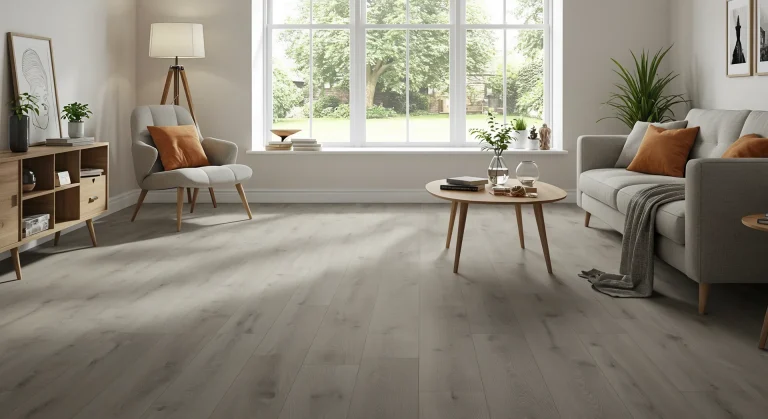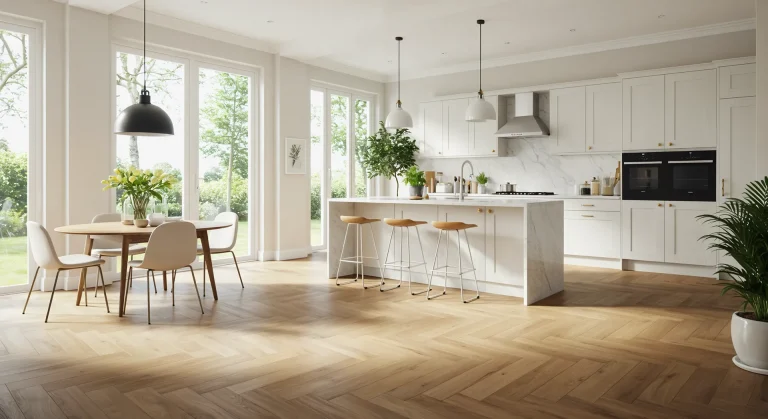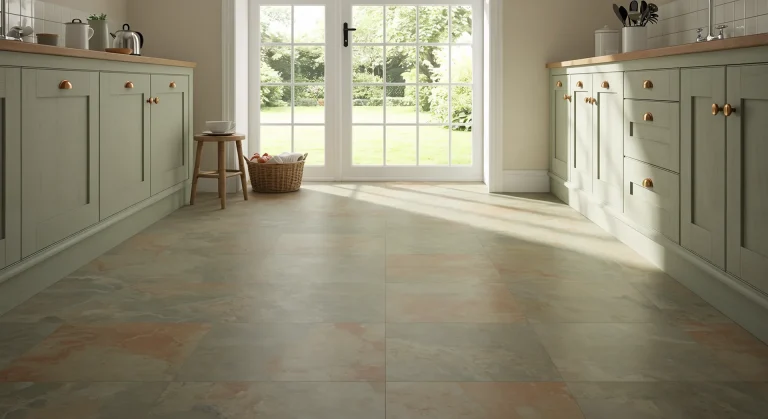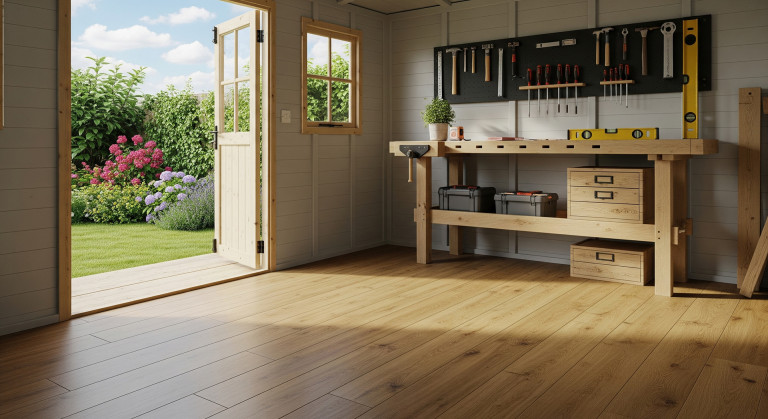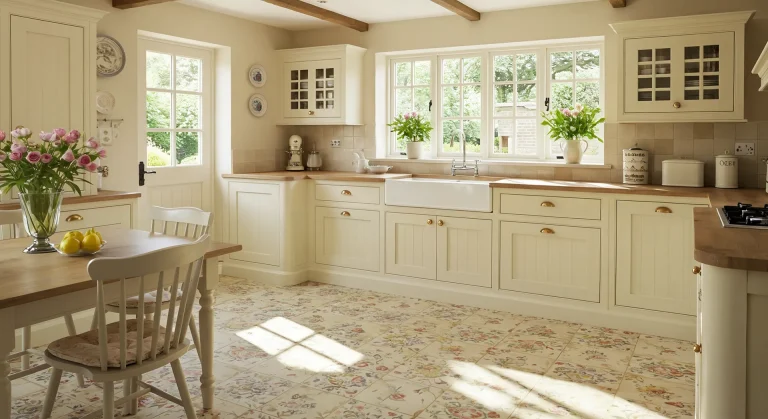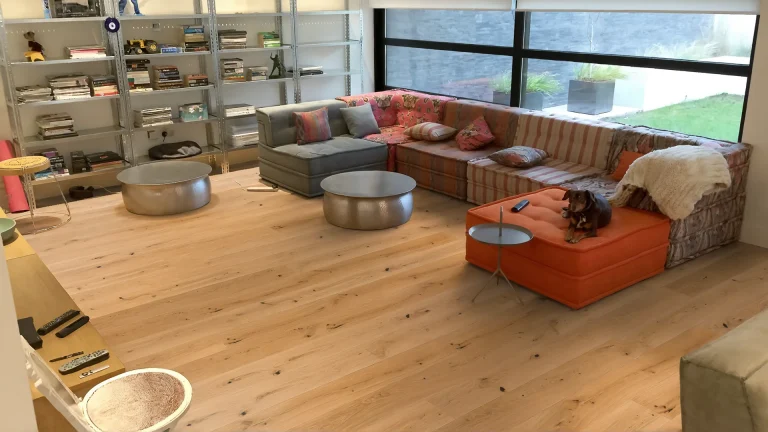The dream of having beautiful, authentic wood floors is a common aspiration for many UK homeowners. Real wood adds warmth, character, and timeless appeal to any space. But traditional solid wood flooring isn’t always the most practical or suitable choice for every home or every room, especially given the UK’s variable climate and the popularity of underfloor heating. This is where understanding what is engineered wood flooring becomes essential. Engineered wood has rapidly become a favoured alternative, offering the genuine beauty of hardwood with enhanced stability and versatility.
But what exactly is it? How is it made, and how does it differ from solid wood or even laminate? This comprehensive guide for 2025 will deconstruct engineered wood flooring, explain its many benefits for UK homes (from country cottages to city apartments), compare it to other popular flooring types, and help you understand if it’s the right choice for your project.
Jump to Section:
- Engineered Wood Flooring Unveiled: The Smart Choice for Modern UK Homes
- The Inner Workings: Understanding Engineered Wood Construction
- Engineered Wood vs. Solid Wood Flooring: A UK Comparison
- Engineered Wood vs. Laminate Flooring: Knowing the Difference
- Top Advantages: Why Choose Engineered Wood for Your Property?
- A World of Choice: Exploring Types of Engineered Wood Flooring
- Key Factors for UK Homeowners: Before You Buy Engineered Wood
- Installation Essentials: What to Expect When Fitting Engineered Wood
- Keeping it Beautiful: Care & Maintenance for Engineered Floors
- Is Engineered Wood Flooring the Right Solution for You?
Engineered Wood Flooring Unveiled: The Smart Choice for Modern UK Homes
So, what is engineered wood flooring? In essence, it’s a clever composite material designed to look and feel like traditional solid wood flooring but with structural enhancements that make it more stable and versatile. Unlike solid wood, which is a single plank of timber, engineered wood is constructed from multiple layers of wood bonded together under high pressure and heat. This layered construction is the key to its superior performance in many situations.
The Inner Workings: Understanding Engineered Wood Construction
A typical engineered wood plank consists of three main parts:
- Top Layer (Lamella or Wear Layer): This is the star of the show – a layer of real hardwood. Common species used in the UK include Oak (by far the most popular), Walnut, Ash, and Maple. The thickness of this top layer is crucial, typically ranging from around 1.5mm to 6mm or more. A thicker wear layer means the floor can withstand more wear and can be sanded and refinished more times during its lifespan (a 4mm+ wear layer might allow for 2-3 refinishes).
- Core Layers: Beneath the hardwood veneer lies the core, which is usually made from multiple layers of fast-growing wood like birch or pine plywood, or sometimes HDF (High-Density Fibreboard) or softer woods. These layers are typically laid in a cross-ply construction, meaning each layer’s grain runs perpendicular to the layer above and below it. This significantly reduces the wood’s natural tendency to expand, contract, warp, or cup with changes in temperature and humidity. This stability is a major advantage in the often-damp UK climate.
- Backing Layer: A final layer of wood or composite material on the underside of the plank, providing additional stability and balance to the entire structure.
This engineered approach allows for wider and longer planks than typically feasible with solid wood, without compromising stability.
Engineered Wood vs. Solid Wood Flooring: A UK Comparison
This is a common dilemma for UK homeowners wanting real wood floors. Here’s how they stack up:
| Feature | Engineered Wood Flooring | Solid Wood Flooring |
| Construction | Layered (real wood top, stable core) | Single piece of solid timber |
| Stability | High. More resistant to humidity/temperature changes. Less prone to warping/gapping. | Moderate. More susceptible to expansion/contraction, warping, cupping. |
| UFH Compatibility | Generally Excellent. Most types are suitable for underfloor heating. | Generally Not Recommended. Can dry out, warp, or gap excessively with UFH. |
| Installation | Versatile: Click-lock (DIY friendly), Tongue & Groove (T&G) for floating/glue/nail. | Typically T&G, traditionally nailed or glued down. More complex fitting. |
| Refinishing | Limited by wear layer thickness (1-3 times typically for 4mm+ wear layers). | Can be sanded multiple times (until tongue/groove is reached). Longer potential lifespan. |
| Cost (UK 2025) | Material: £30-£70+/m². Installation: £20-£45/m². Often more cost-effective overall. | Material: £50-£80+/m². Installation: £25-£60+/m². Often higher overall cost. |
| Appearance | Identical to solid wood once laid (top layer is real wood). | Authentic real wood. |
| Moisture Resistance | Better than solid wood, but not waterproof. Suitable for kitchens with care. | Poor. Not suitable for kitchens, bathrooms, or basements. |
| Sustainability | Uses less slow-growing hardwood per m² as only the top layer is premium timber. | Uses solid premium timber throughout each plank. |
| Plank Dimensions | Often available in wider and longer planks due to enhanced stability. | Width/length often limited to maintain stability. |
Engineered Wood vs. Laminate Flooring: Knowing the Difference
This is another frequent point of confusion. While both can look similar from a distance, they are fundamentally different:
- Core Material: The most significant difference is the top layer. Engineered wood has a real wood veneer. Laminate flooring has a photographic print layer protected by a clear melamine wear coat, all on an HDF core.
- Authenticity & Feel: Engineered wood looks, feels, and sounds like real wood because it is real wood on top. Laminate is an imitation; while high-quality laminate looks very realistic, it doesn’t offer the same unique grain variation or tactile experience.
- Durability: The wear layer on good quality laminate (AC4/AC5) is very tough and scratch-resistant. Engineered wood’s durability depends on the hardness of the wood species and the quality of its factory-applied finish (lacquer or oil).
- Refinishing/Repair: Engineered wood can be sanded and refinished a limited number of times (depending on wear layer). Laminate cannot be sanded or refinished; damaged planks usually need replacing.
- Moisture: Both have HDF or plywood cores and are not fully waterproof (unlike LVT). Laminate’s HDF core is particularly susceptible to swelling from moisture. Some engineered woods offer better moisture resistance than standard laminate, especially those with water-resistant finishes or core technologies (e.g., Quick-Step’s Cascada range).
- Cost: Laminate flooring is generally the most affordable option of the three.
- Value: Engineered wood typically adds more perceived value to a property than laminate.
Top Advantages: Why Choose Engineered Wood for Your Property?
Understanding what is engineered wood flooring clearly highlights its benefits for UK homes:
- Real Wood Beauty: You get the authentic look, feel, and character of genuine hardwood.
- Enhanced Stability: Its cross-ply construction makes it far more resistant to changes in temperature and humidity than solid wood, crucial for the UK’s climate. This means less gapping in winter and less expansion in summer.
- Underfloor Heating (UFH) Compatibility: Most engineered wood is perfectly suitable for use with UFH systems, a major plus for modern comfort.
- Versatile Installation: Can be floated (click or T&G with glued joints), glued down, or sometimes nailed down, offering flexibility for different subfloors and DIY capabilities.
- Wider Application: More stable than solid wood, it can be confidently used in conservatories, basements (with proper DPM), and kitchens (with appropriate care and finish).
- Eco-Friendlier Resource Use: By using precious hardwood only for the top veneer, it makes more efficient use of slow-growing timber resources compared to solid wood flooring. Many reputable UK brands like Woodpecker and Tuscan offer FSC-certified options.
- Cost-Effective Real Wood: Often provides a more affordable way to get a real wood floor, especially when considering wider planks or more exotic species, and potentially simpler installation methods.
- Adds Value: High-quality engineered wood flooring is a desirable feature that can add value to your home.
A World of Choice: Exploring Types of Engineered Wood Flooring
The UK market offers a vast selection:
- Wood Species: Oak is overwhelmingly the most popular in the UK (natural, smoked, fumed, limed, white-washed, grey-stained), followed by Walnut (richer, darker tones), Ash, Maple, and others.
- Wear Layer Thickness: Ranges from ~1.5mm (for budget options, cannot be sanded) up to 6mm+ (premium, allows multiple refinishes). A 3-4mm wear layer is a good balance for many homes.
- Overall Plank Thickness: Typically from 10mm to 21mm. Thicker boards generally feel more solid and can help bridge minor subfloor imperfections.
- Plank Widths & Lengths: Narrow strips (~70-90mm), standard planks (~120-150mm), and increasingly popular wide planks (180mm, 220mm, or even wider). Longer planks create a more expansive feel.
- Finishes (Usually Pre-finished):
– Lacquered (Varnished): Forms a durable protective film. Modern water-based polyurethanes (e.g., from Bona, Pallmann) are common, offering matt, satin, or gloss sheens with low VOCs.
– Oiled / Hardwax Oiled: Penetrates the wood for a natural look and feel. Brands like Osmo and Fiddes are well-known for hardwax oils. Requires specific maintenance.
– UV-Cured: Factory-applied finishes (oil or lacquer) cured instantly with UV light for extreme initial durability.
– Brushed, Distressed, Hand-Scraped: Textured finishes that add character and can help disguise minor wear. - Grading: Describes the appearance of the wood veneer:
– Prime/Select: Minimal knots, uniform colour – more formal look.
– Natural/Character: Some knots, colour variation – classic wood look.
– Rustic: More prominent knots, sapwood, colour variation – for a more characterful, traditional, or farmhouse style. - Profiles:
– Click-Lock: Edges click together for easy floating installation (DIY friendly).
– Tongue & Groove (T&G): Traditional profile. Can be floated (joints glued), glued down, or nailed down.
Key Factors for UK Homeowners: Before You Buy Engineered Wood
- Room Suitability: Consider foot traffic and moisture levels. High-traffic areas benefit from thicker wear layers and durable finishes (lacquer or robust hardwax oil). While more moisture-resistant than solid wood, it’s not ideal for bathrooms; kitchens require care and a good finish.
- Subfloor Condition: Must be clean, dry, and level. Concrete ground floors in the UK will likely need a Damp Proof Membrane (DPM).
- Underfloor Heating: If you have or plan UFH, ensure the engineered wood AND any underlay are certified compatible (check Tog ratings).
- Budget: Include cost of flooring, underlay, DPM, trims, adhesive (if gluing), and professional fitting if not DIYing. Good quality engineered wood from brands like Kahrs, Quick-Step, or V4 is an investment.
- Maintenance Commitment: Oiled finishes require specific cleaners and periodic re-oiling. Lacquered finishes are lower maintenance day-to-day but harder to spot repair.
Installation Essentials: What to Expect When Fitting Engineered Wood
A full “how-to” is beyond this guide (see specific installation guides), but key principles include:
- Acclimatisation: Crucial for 48-72 hours in the room.
- Subfloor Preparation: As detailed above – clean, dry, level. DPM on concrete.
- Underlay (for floating floors): Use appropriate underlay designed for engineered wood, with DPM if needed.
- Expansion Gaps: Essential (8-12mm) around the entire perimeter for floating installations to allow natural movement.
- Fitting Method: Click-lock for DIY floating. T&G can be floated (glue plank joints) or fully bonded (glued down).
Keeping it Beautiful: Care & Maintenance for Engineered Floors
Understanding how to clean wood flooring correctly is essential for preserving its natural beauty and longevity. For engineered floors, which combine real wood with structural stability, specific care and maintenance will keep them looking their best:
- Regular Cleaning: Sweep or vacuum (soft brush head) regularly.
- Spill Management: Wipe up spills immediately.
- Damp Mopping: Use a well-wrung microfibre mop.
– Lacquered floors: Clean with a pH-neutral wood floor cleaner.
– Oiled/Hardwax Oiled floors: Clean ONLY with specialist soaps designed for oiled floors (e.g., Osmo Wash & Care, Bona Soap for Oiled Floors). These gently clean and replenish oils. - Protection: Use felt pads on furniture. Use doormats at entrances. Avoid dragging heavy items.
- NO STEAM MOPS: Can damage the wood and finish.
- Periodic Refresh (Oiled/Hardwax Oiled): Apply a maintenance oil or liquid wax care product every 6-18 months (depending on traffic) to restore protection and lustre.
Is Engineered Wood Flooring the Right Solution for You?
Engineered wood flooring genuinely offers the best of both worlds for many UK homeowners: the undeniable beauty and authenticity of real hardwood, combined with enhanced structural stability that makes it suitable for a wider range of applications, including over underfloor heating and in areas with some humidity fluctuation (like kitchens or homes in coastal areas).
It’s a durable, long-lasting option that, with the right care, can look stunning for decades and potentially be refinished to extend its life further. While the initial cost might be higher than laminate or LVT, the added value, feel, and longevity often make engineered wood a wise investment for those seeking an authentic wood floor that’s built for modern life. By understanding what engineered wood flooring is and its specific characteristics, you can confidently choose a floor that will bring lasting style and quality to your home.

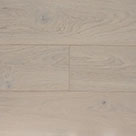 Light
Light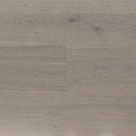 Grey
Grey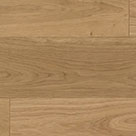 Natural
Natural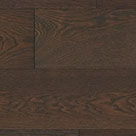 Dark
Dark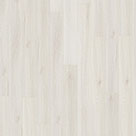 White
White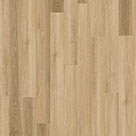 Light
Light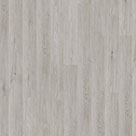 Grey
Grey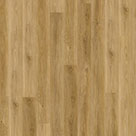 Natural
Natural Dark
Dark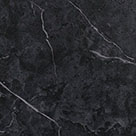 Black
Black

